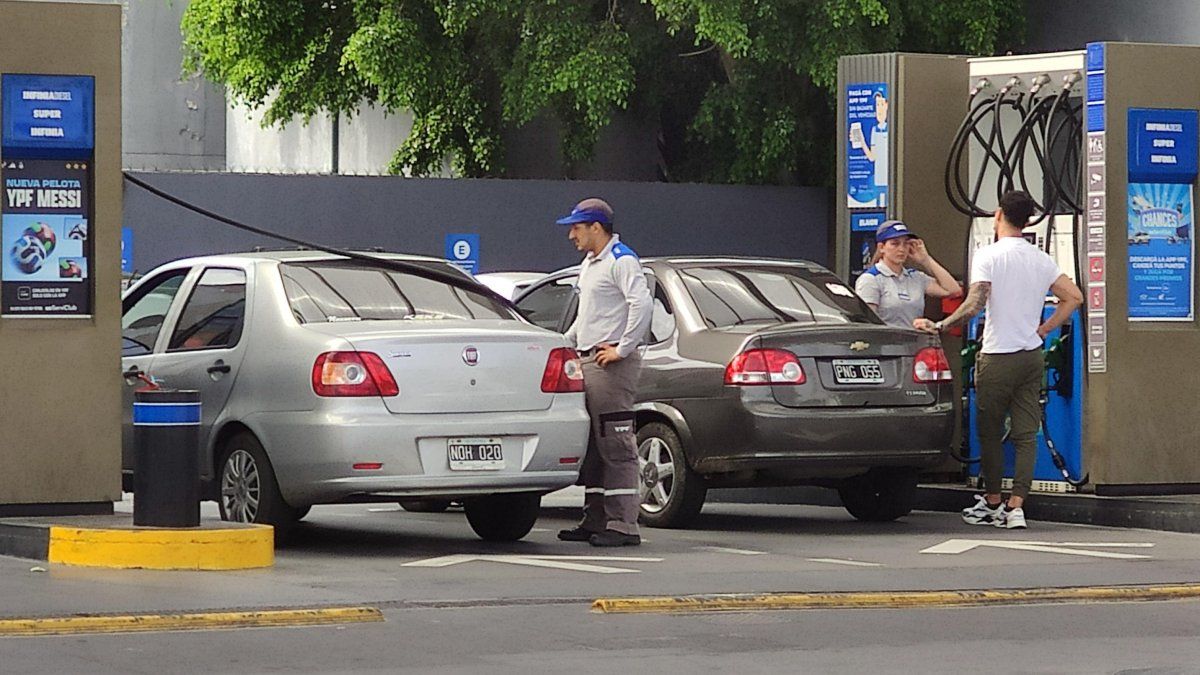Although the president Javier Milei He assured that “there is no plan B” for the application of his economic program, the truth is that the Ministry of Economy will have to look for alternatives to reach zero deficit (at least the primary one), after they removed the fiscal chapter of the omnibus law . Reimplement the income tax, put withholdings on the entire economy, change the update of pensions, make an advance on personal assets, add a moratorium and reintroduce money laundering would have implied an improvement in public accounts of almost 2 points of GDP. Income and cuts that, if the law is approved, will not be there, at least until the projects are sent back to Congress.
For this reason, the Minister of Economy, Luis Caputoanalyzes alternatives, and puts the magnifying glass on the energy sector, given that The return of the fuel tax and the removal of subsidies on electricity and gas rates could imply adding revenue for more than 1 point of GDP, without having to go through Congress. For companies in the sector, concerns no longer involve price controls, nor political negotiations between deputies, but rather legal security: the fear is that if the increases are very strong, it will be justice that will decide them. stop, as already happened during the Cambiemos government.
Tax impact
With the reduction of economic subsidies, Economy plans to reduce spending by 0.7% of GDP, according to the forms published in the X account of the Palacio de Hacienda. To achieve this, progress must be made with the removal of subsidies for electricity, gas and transportation, for which a large part of the public hearings have already been carried out.
Meanwhile, as of this Thursday, February 1, the freeze on the fuel tax that Alberto Fernández’s government had made in the electoral campaign expires. If applied in its entirety, could imply extra resources for the Nation for 0.37 points of GDPand for the provinces by 0.15% of GDP, according to the latest report from the Argentine Institute of Fiscal Analysis (IARAF).
Thus, Caputo could add collection by 1 point of GDPafter the removal of the fiscal chapter began to make noise in the market, and in a context where the International Monetary Fund (IMF) decides the disbursement of US$ 4.7 billion.
In any case, although these measures do not have to go through Congress, other dilemmas arise.
Dilemmas in Economics
In the case of electricity and gas rates, public hearings have already begun. However, the Ministry of Energy, which heads Eduardo Rodríguez Chirilloanticipates that another hearing is missing, scheduled for March, to define what the new subsidies mechanism will be like, completely different from the current segmentation, with a demand subsidy based on a basic energy basket.
Once the electricity and gas hearings have been held with distribution and transportation companies, the Government must not only move forward with the removal of subsidies, but also define how much it will give to the companies. Information It could be made public this Thursday, February 1, when the new gas tariff tables and the new seasonal price of electricity are published in the Official Gazette. After years with practically frozen rates, in the case of gas, the companies requested increases that climbed up to 500%. In the case of electricity, AMBA distributors and transporters requested a readjustment of their income of around 250%.
To this we must add the reduction of subsidies that the Treasury carries out on energy generation, whose costs rose in the last month as a result of a devaluation of more than 100%, given that the costs are practically dollarized. The removal of subsidies will imply an impact on final rates: currently, Users only pay 17% of the PIST price of gas, and 45% of the cost of electricity generation and transportation. It is an average given that it varies according to income level and areas of the country, but the rest is subsidized by the State.
Besides, Economy will define the update formula for electricity and gas rates, which companies ask to be every month. In his presentation in Congress, Chirillo, one of the brains of the omnibus law, had said that he agreed with this demand, but that It could be based on an index that follows salaries, and not indexed by inflationas the companies requested.
In 2023, the State allocated 1.5 points of GDP to energy subsidies, with a primary fiscal deficit of 3 points, so half of the deficit was explained by subsidies. Although in Economy they are convinced of wanting to reduce them, The obstacle is to calibrate this impact on inflation, which if this path is followed, will quickly imply a delay in the exchange rate. On the other hand, although companies expect a recomposition of their income, there is fear of judicialization, as has been happening with Milei’s DNU, and as already happened with the Cepis ruling.
In the case of fuels, a similar dilemma arises: the application of the fuel tax (ICL), after years of being postponed, It will imply an increase in the liter of gasoline, with the impacts that this has in the second round on public transportation and on the logistics of the entire economy.. The idea of Energy is to apply it in sections, and then modify this tax, which is updated by inflation.
It is that in the case of fuels, gasoline, which has already risen more than 100% since the beginning of November, will have two other factors that will put pressure on its price: Added to the application of the tax is the increase in the cut of biofuels, which is in the omnibus law and the Government’s objective of tending to the values of import parity, and thus send signals to the oil sector, which promised that if the Congressional law is approved, it could invest US$ 15,000 million per year.
Source: Ambito




